ASTENA
Advanced Surveyor of Transient Events and Nuclear Astrophysics
ASTENA is the result of AHEAD Work Package 9 (study of possibile future missions). Thanks to its increased sensitivity with respect to state-of-the-art soft gamma–telescopes in the MeV and sub-MeV energy band, will enable the study of the so far uncovered population of low-luminosity GRBs and will afford to detect or improve existing detections with unprecedented angular resolution of gamma-ray lines.
The ASTENA mission consists of two complementary instruments:
– An array of Wide Field Monitors with Imaging, Spectroscopy and polarimetric capabilities (WFM-IS), based on the same technology of the THESEUS/XGIS and HERMES instruments, with a large effective area and a broad energy passband (2 keV-20 MeV);
– Narrow Field Telescope (NFT) with focusing capabilities based on the use of an advanced Laue lens made from bent crystals of silicon and germanium, and a focal plane detector based on semiconductor technology (CZT or germanium). This results in an instrument with unprecedented angular resolution, broad energy passband (50-700 keV), large effective area and low weigth.
ASTENA is expected to be a real breakthrough in the hard X-/soft gamma–ray energy band, opening a new window in high energy astrophysics.
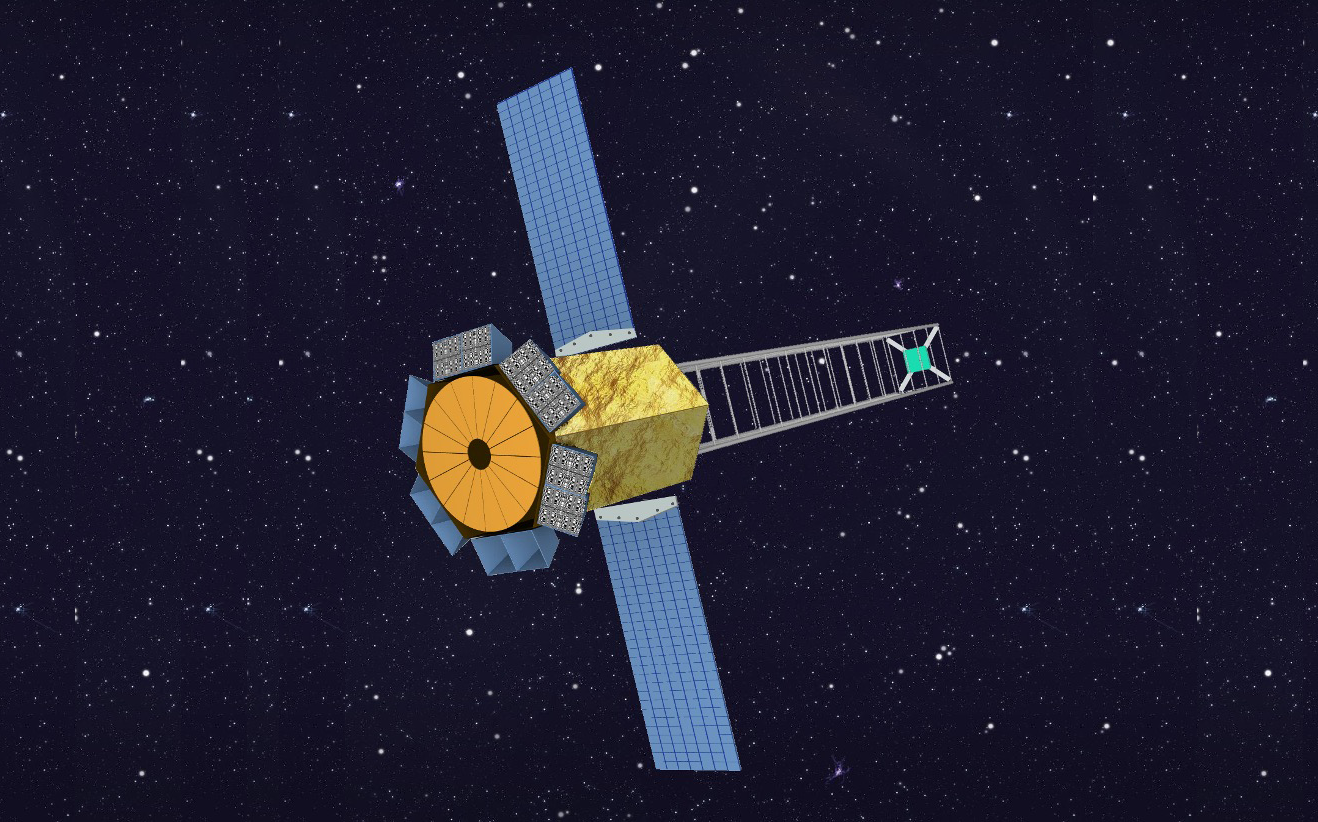

Summary of the main properties of the WFM-IS and of the NFT on board ASTENA.
NFT
The NFT is based on a broad band (50–600 keV) Laue lens with ∼ 3 m diameter and 20 m focal length with a Position Sensitive Detector (PSD) in the focal plane. The lens we propose is made of ∼19500 bent crystal tiles of Si(111) and Ge(111), with 40 m curvature radius (within 5% uncertainty). The crystal tiles have been assumed to have a 30 × 10 mm2 cross section, and an optimized thickness vs. energy for maximizing the diffraction efficiency, with the condition of a maximum thickness of 5 mm. The lens is builded in modules that will be placed in a spherical frame. Thanks to the use of bent Si(111) and Ge(111) crystals tiles, an energy passband 50–600 keV is guaranteed. Using simulations, validated by laboratory measurements on the performance of a large sample of bent crystals, we evaluated the angular resolution of 0.5 arcmin with a useful FOV of approximately 4 arcmin. In order to take advantage of a focusing instrument, requirements on the energy and spatial resolution, and on detection efficiency must be set. The requirements for such a detector are a high detection efficiency (>80% @ 500 keV), in the energy range 10-1000 keV and high performance spectroscopy (≤1% FWHM @ 511 keV). In addition, sub-millimeter spatial resolution in three dimensions (≤ 300 µm),fine timing resolution (≤1 µs) and polarimetry capability are needed. In this perspective two possibilities are under study: a Cadmium Zinc Teluride (CZT) detector, having the advantage of high Z and room temperature operation; and a Germanium (Ge) detector, to exploit a greater energy resolution.
Thanks to the combination of angular resolution, sensitivity and large FoV, NFT/ASTENA will be a breakthrough in the hard X-/soft gamma ray energy band, also enabling polarimetry in this energy band. It will provide measurements of the unexplored GRB afterglow at hard X-/soft gamma ray; the first deep and high angular resolution study of the origin of the 511 keV positron annihilation line from the galactic center region; study of the nuclear lines produced in Type Ia SN explosions; polarization measurements of hard X-/sof gamma rays from galatic sources and GRB afterglow; and much more. See ASTENA’s white paper by Frontera et al. 2021.

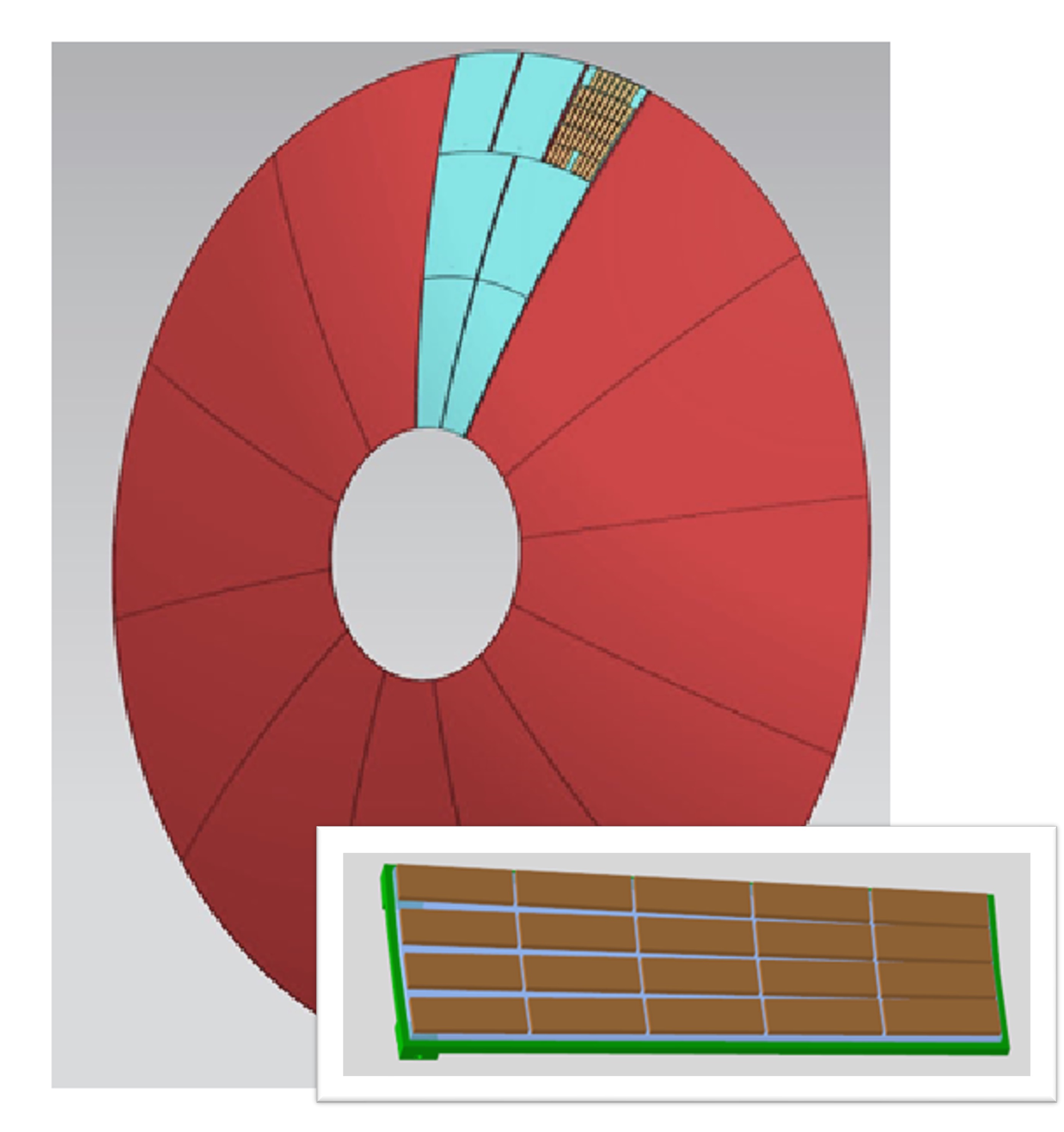
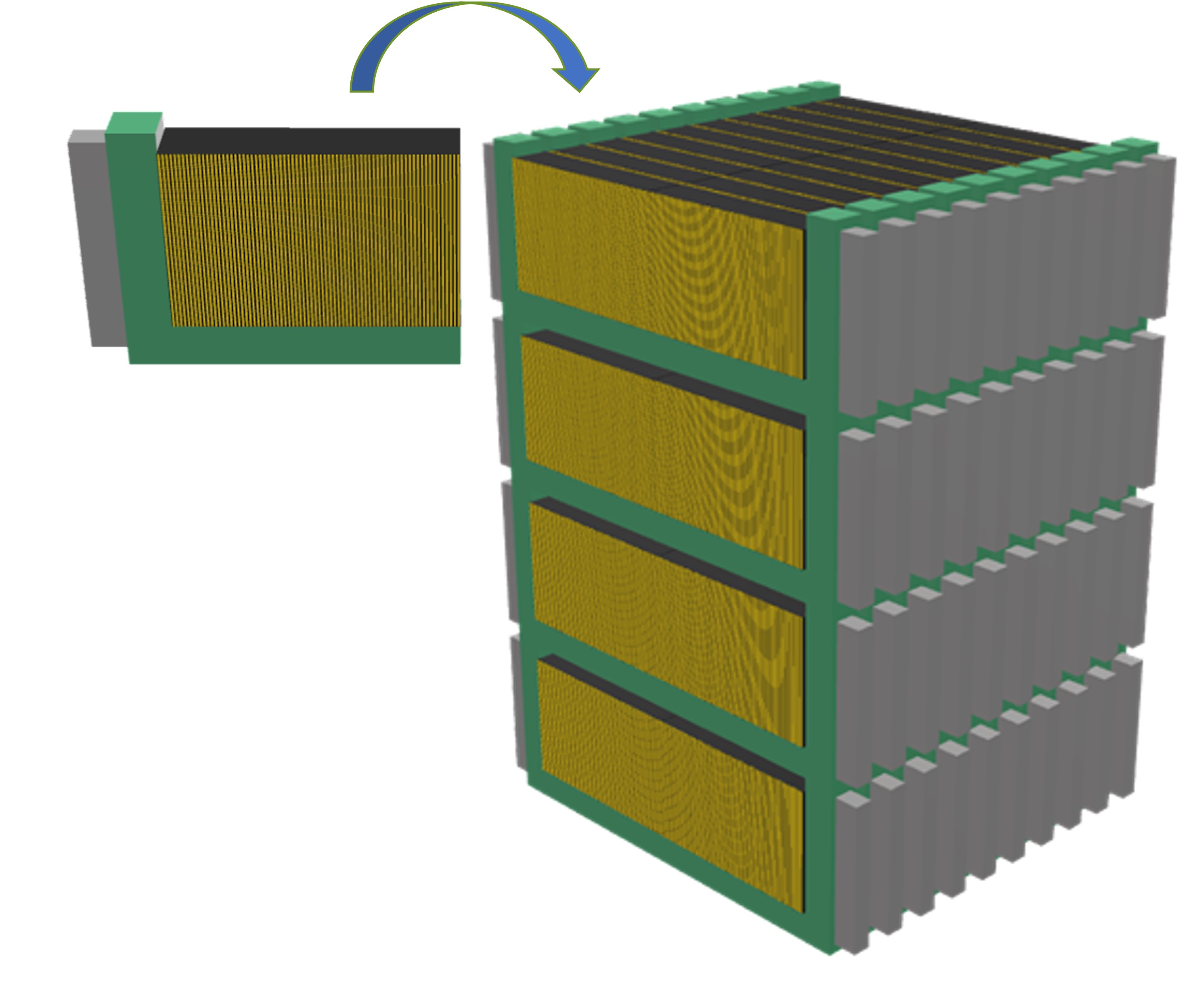
Left: Drawing of the Laue lens concept. Center: Schematic CAD model of a full Laue lens showing the modular configuration of the lens. Right: Configuration of a possible focal plane detector based on a stack of CZT crystals.
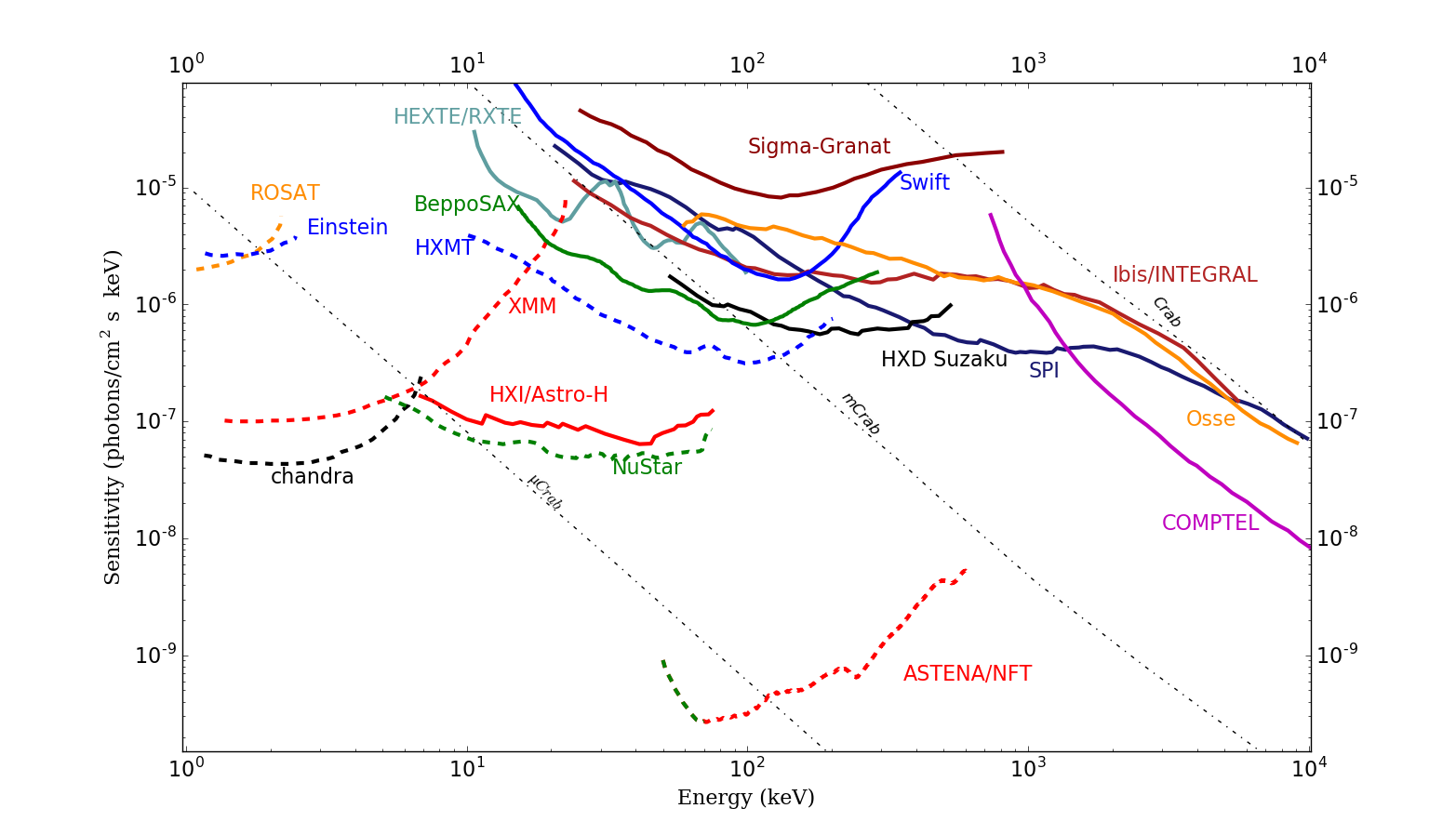
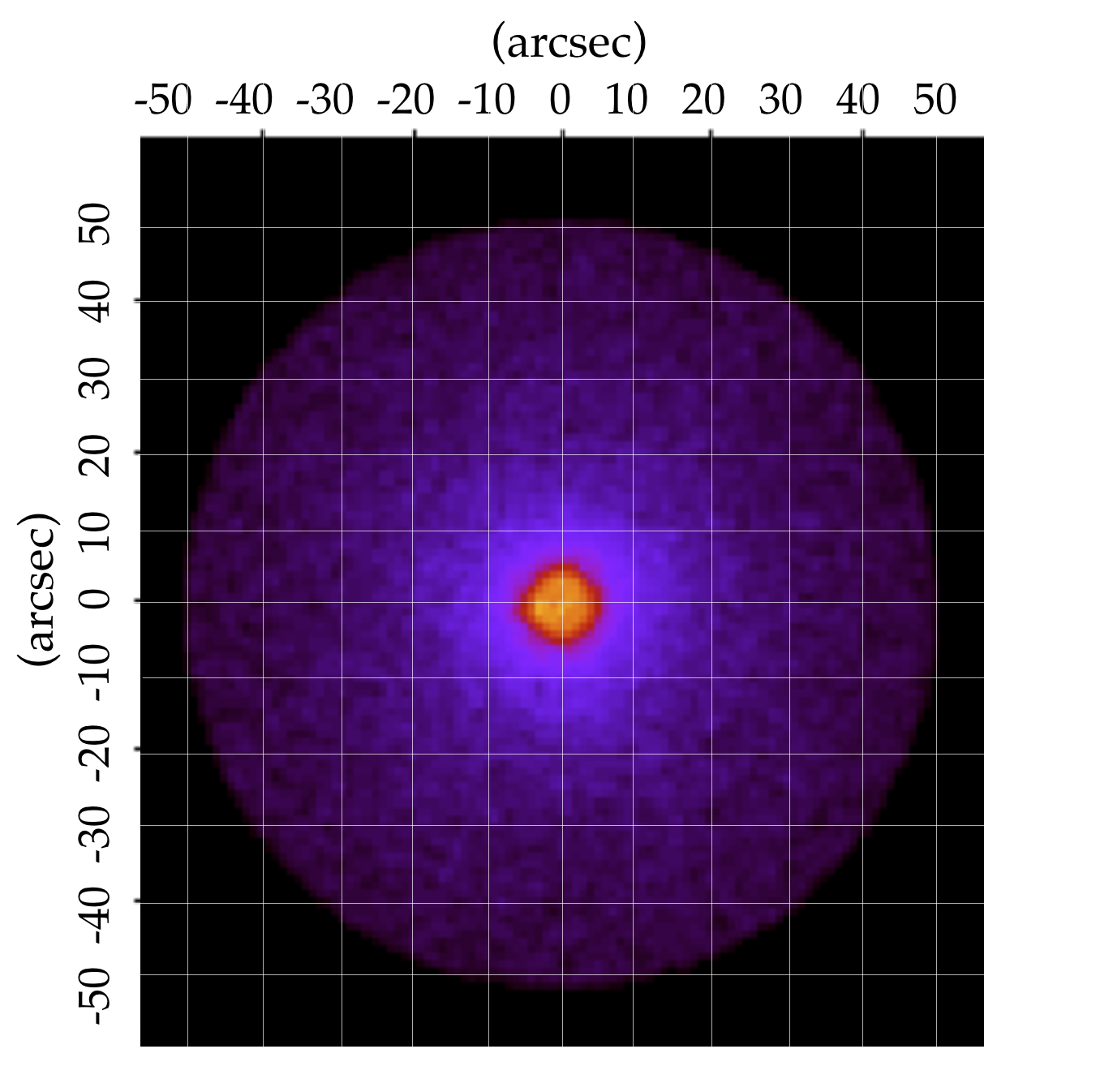
Left:NFT continuum sensitivity at 3σ confidence level, with∆E=E/2 and ∆T=100 ks, compared with that of other missions or experiments. Right: Simulated 2-D PSF image achieved with the NFT, as obtained with our Laue lens physical model with diffractive bent crystals, in the case of an on-axis source.
WFM-IS
The WFM-IS consists in an array of 12 units, each unit is a Position Sensitive Detector (PSD) of 43 × 42 cm cross section, surmounted by a square coded mask of 80 cm side at 70 cm distance. A PSD unit consists of an array of 4×8 modules, each module consisting of 10 rows of hexagonal scintillator bars, with a distance between contiguous centres across hexagon flat sides of 5 mm, for a total of 205 bars per module. The scintillations from the bars are readout, on the top (toward the mask), by linear multi-anode Silicon Drift Detectors (SDDs) 0.4 mm thick, and, on the bottom, by hexagonal single anode SDDs with a distance between hexagon flat sides of 5 mm. The functioning principle is similar to that adopted for the X-Gamma-ray Imaging Spectrometer (XGIS) aboard the THESEUS mission, having the great advantage of a very broad passband (2 keV–20 MeV).
Imaging capabilities are obtained by means of a double scale coded mask, one scale for the high energy photons (30–150 keV) that lose their energy in the scintillator bars, and another scale for the low energy photons (mainly < 30 keV) that lose their energy in the SDD alone. For high energy photons (>150 keV) the source localization is obtained by Compton kinematics reconstruction, exploiting the 3D detector segmentation, and by triangulation, exploiting the different fluxes of the units.
Building on the foundation of the XGIS/THESEUS, WFM-IS will have a higher effective area (by a factor of 6), thus providing a substantial step forward for timing, spectroscopy, and polarimetry of GRB prompt emission. This will allow: to prerform the first survey of low luminosity Gamma-Ray Bursts; a fast localization of electromagneti counterparts of gravitational waves; polarimetry of transient events; and detect the X-ray counterparts of the Fast Radio Bursts. See ASTENA’s white paper by Guidorzi et al. 2021.
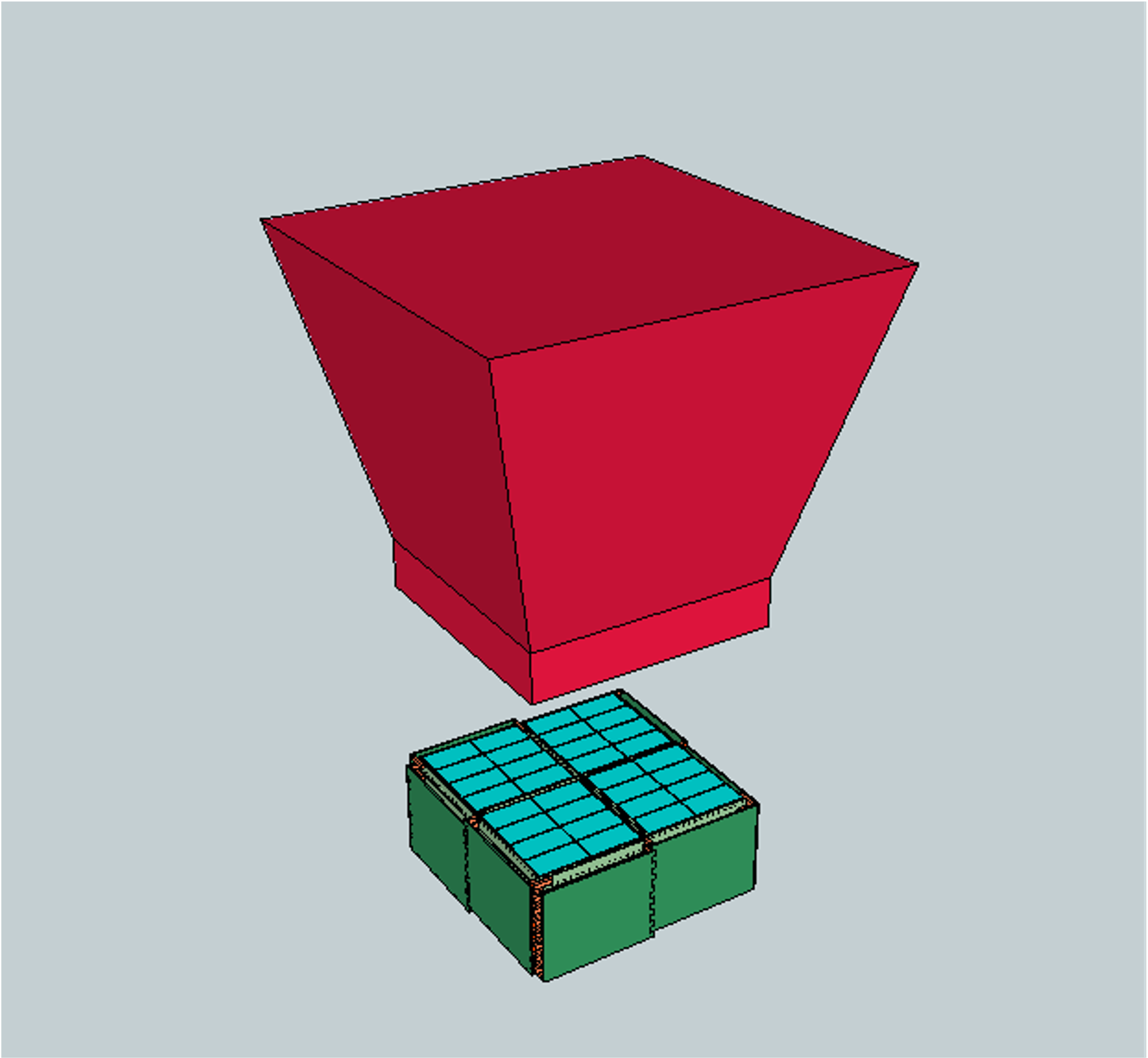
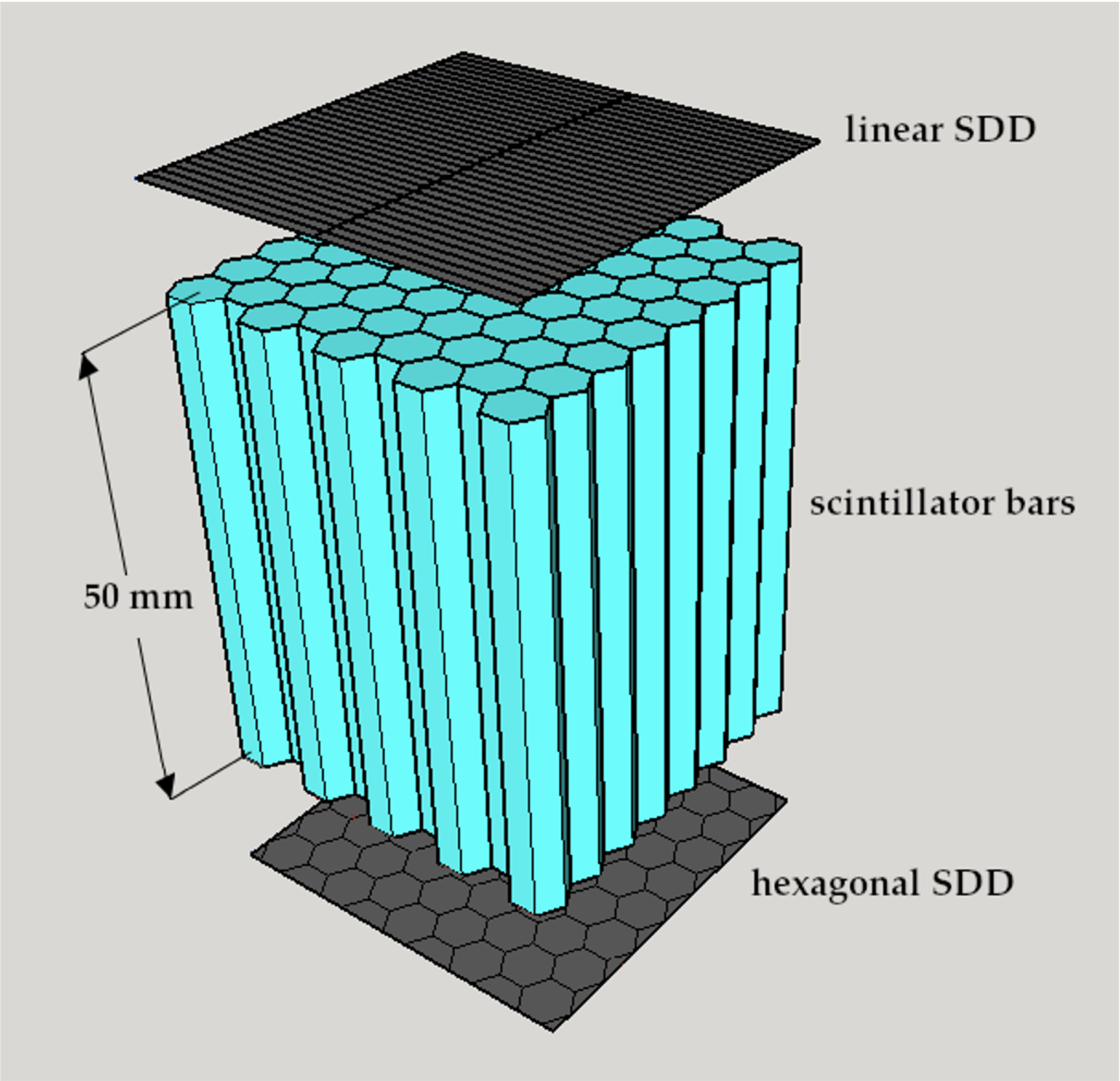
Left: schematic view of a WFM-IS unit. Right: Exploded view of a portion of a detection module of a WFM-IS unit.
